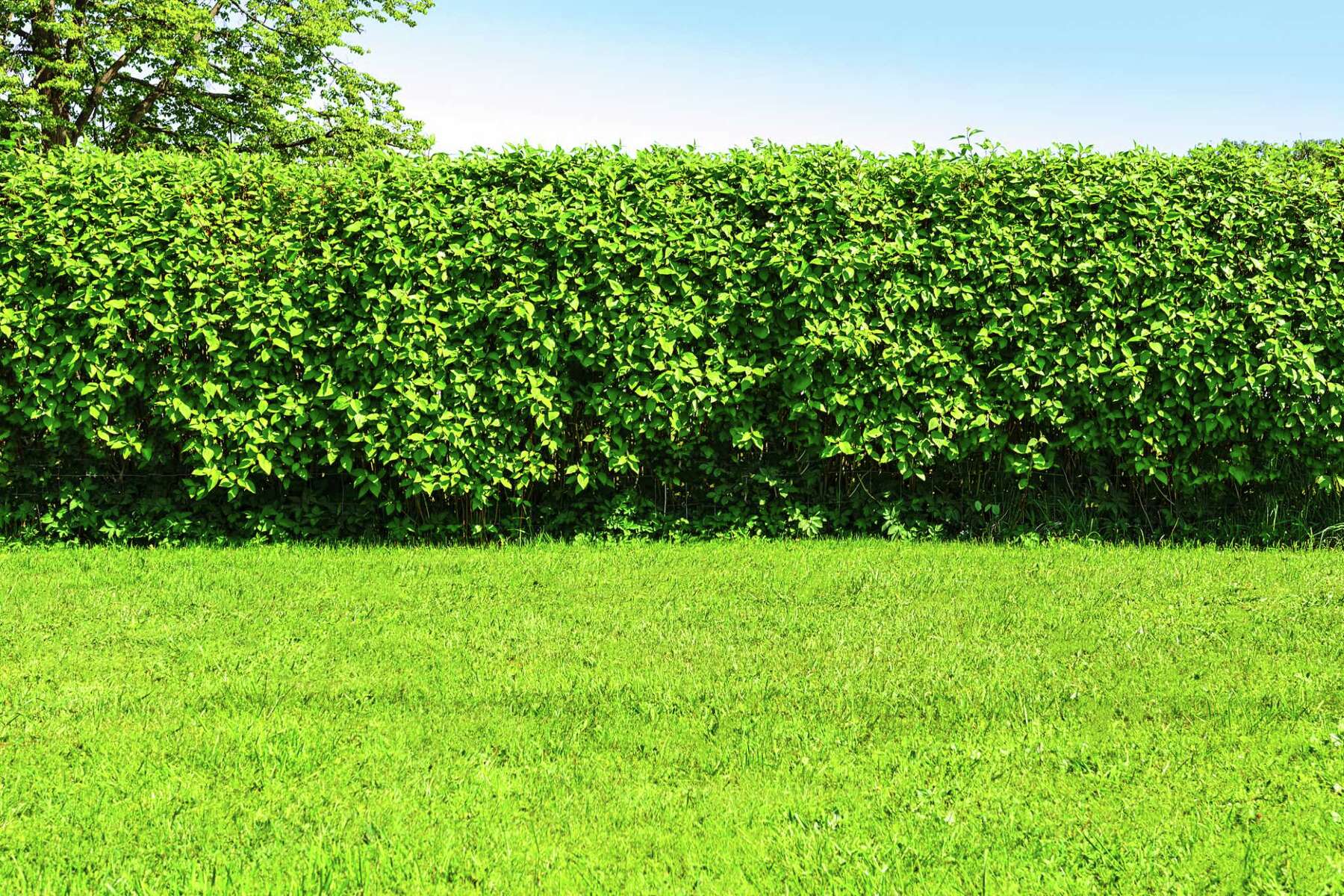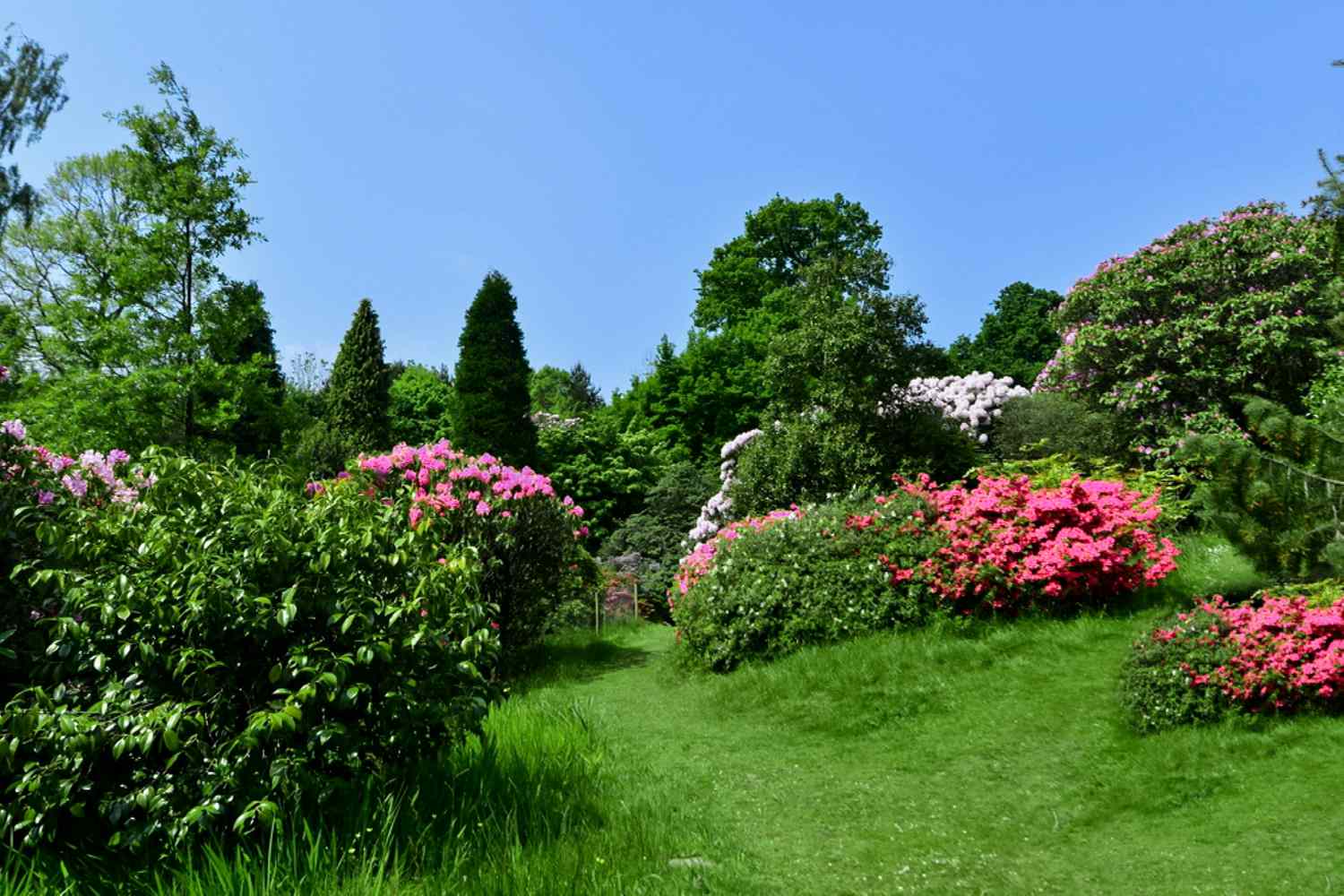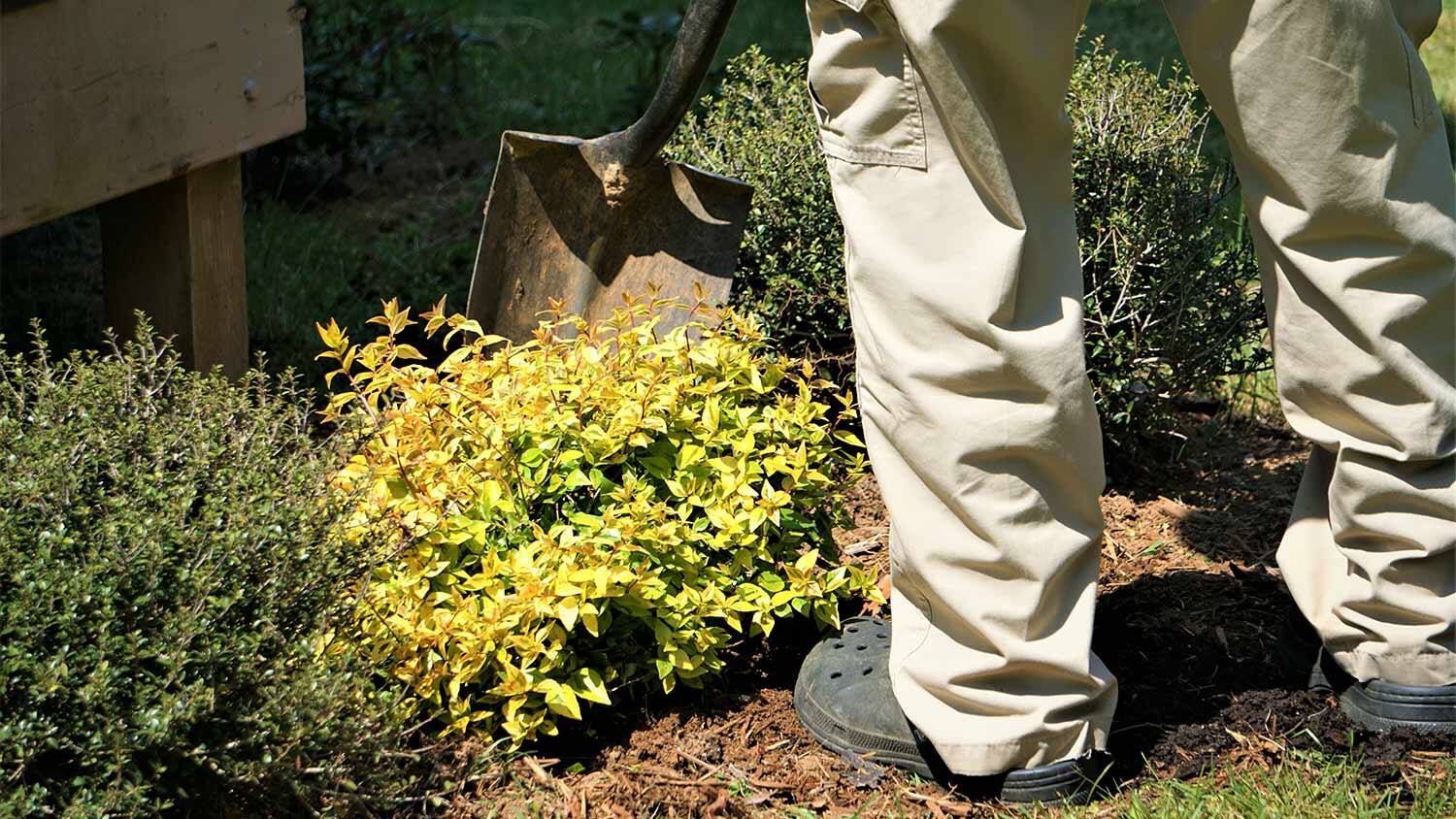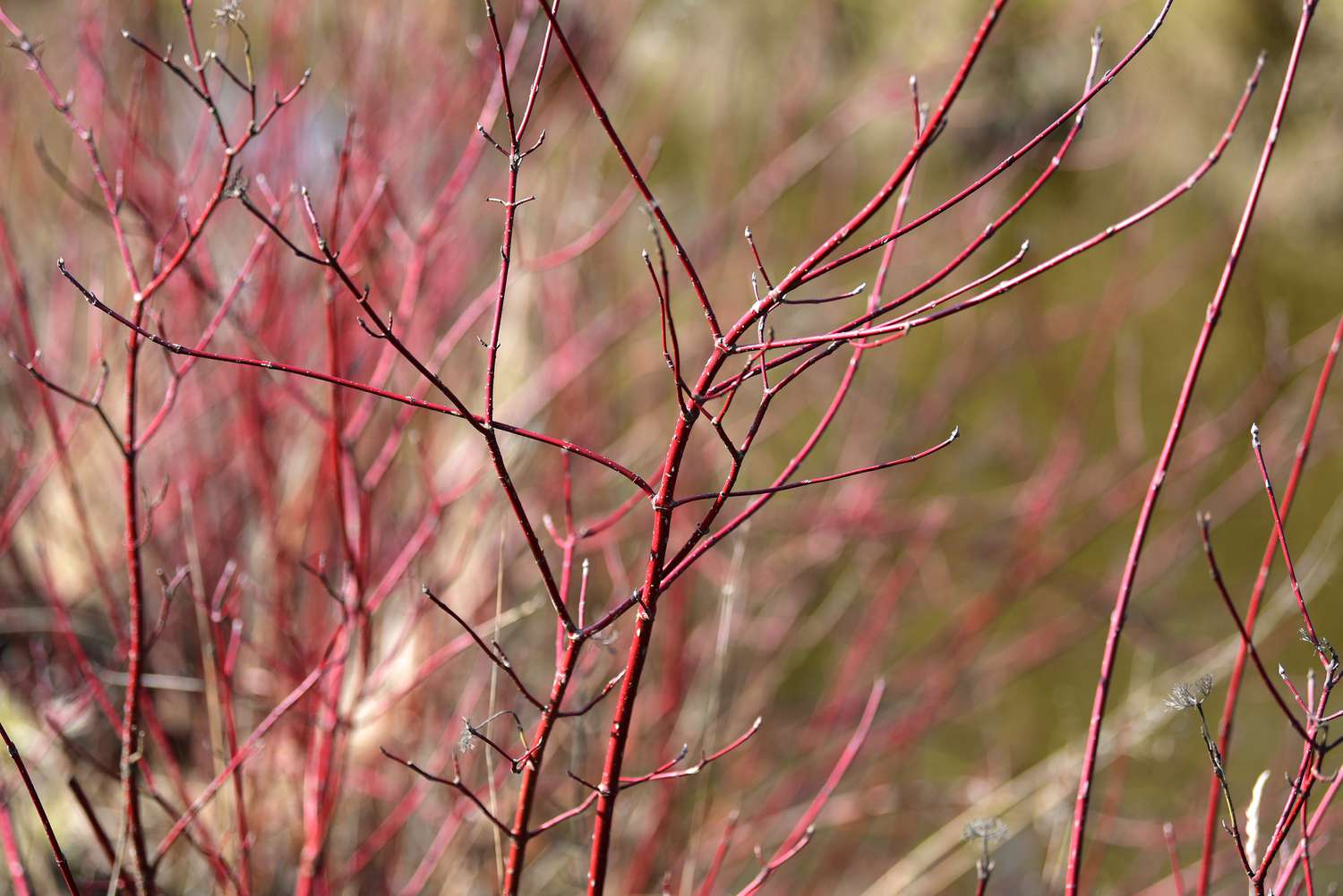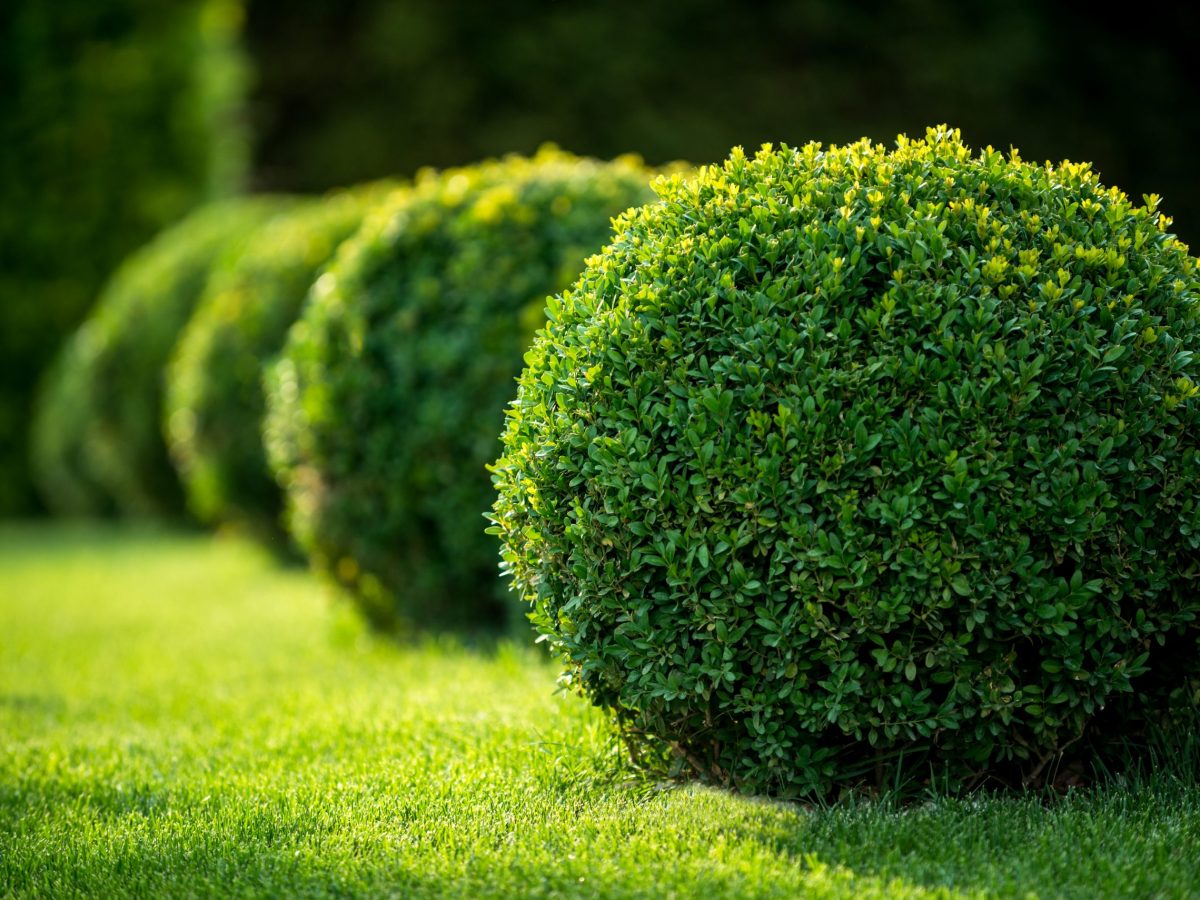Home>Gardening Techniques>DIY Projects>How To Draw A Shrubs


DIY Projects
How To Draw A Shrubs
Published: October 17, 2023
Learn how to draw shrubs with our easy DIY projects. Enhance your artistic skills and create stunning nature-inspired illustrations.
(Many of the links in this article redirect to a specific reviewed product. Your purchase of these products through affiliate links helps to generate commission for Chicagolandgardening.com, at no extra cost. Learn more)
Table of Contents
Introduction
Welcome to the fascinating world of DIY projects! If you’re looking to unleash your creativity and embark on a fulfilling hobby, drawing shrubs might be just the thing for you. Drawing shrubs is a versatile skill that allows you to add depth and realism to your artwork, whether you’re creating a landscape painting, illustrating a botanical scene, or simply expressing yourself through sketching.
While drawing shrubs may seem daunting at first, with a little guidance and practice, you can develop the skills necessary to bring these natural wonders to life on paper. In this article, we will take you through a step-by-step process of drawing shrubs, from sketching the basic shape to adding details, texture, shading, and highlights.
By following these instructions and incorporating some tips and techniques, you’ll be amazed at how quickly you can improve your artistic abilities and create stunning illustrations of shrubs. So, let’s gather our materials and get ready to delve into the world of shrub drawing!
Materials Needed
Before we begin, let’s gather the essential materials you’ll need to draw shrubs:
- Drawing Paper: Choose a high-quality drawing paper that is thick enough to handle various drawing techniques and won’t smudge easily.
- Drawing Pencils: Invest in a set of graphite pencils ranging from soft to hard. These will allow you to achieve different levels of darkness and precision in your drawings.
- Eraser: A good quality eraser is crucial for correcting mistakes and refining your artwork. Look for a soft eraser that won’t damage the paper.
- Sharpeners: Make sure to have a pencil sharpener or two handy to keep your drawing pencils sharp and ready to use.
- Blending Stumps or Tortillions: These tools are useful for blending and smudging graphite, creating smooth transitions and realistic textures in your drawings.
- Reference Images: Gather a collection of reference images or photographs of shrubs to study and draw inspiration from. These can be found in books, magazines, or online.
- Optional: Colored Pencils or Watercolor: If you want to add a pop of color to your shrub drawings, you can experiment with colored pencils or watercolor to create vibrant and realistic foliage.
With these basic materials in hand, you’ll be well-equipped to dive into the world of shrub drawing and create beautiful, nature-inspired artwork.
Step-by-Step Instructions
Now that we have our materials ready, let’s walk through the step-by-step process of drawing shrubs:
- Sketching the Basic Shape: Begin by lightly sketching the basic shape of the shrub using a light graphite pencil. Start with simple shapes like circles or ovals for bushes, or elongated shapes for taller shrubs. Pay attention to the proportions and placement on the paper.
- Adding Details and Texture: Once you have the basic shape in place, start adding details such as branches and leaves. Observe the reference image and carefully replicate the patterns and textures of the shrub. Use light, quick strokes to indicate the direction of the branches and the overall texture of the foliage.
- Shading and Highlights: To add depth and realism, focus on shading the shrub. Identify the areas where the light source hits and create gradients by varying the pressure and darkness of your pencil strokes. Use an eraser or a kneaded eraser to create highlights and bring out the lighter areas.
- Final Touches and Adjustments: Step back and assess your drawing. Make any necessary adjustments to the shape, proportions, and values. Pay attention to the small details, such as the tiny twigs or variations in leaf sizes. Take your time to refine the drawing until you’re satisfied with the result.
Remember, practice makes perfect. Don’t be discouraged if your first few attempts don’t turn out as expected. With each drawing, you’ll gain more experience and develop your own style. Enjoy the process and have fun exploring the world of shrub drawing!
Sketching the Basic Shape
When starting to draw a shrub, it’s important to begin with a rough sketch of its basic shape. This initial step will serve as a foundation for adding details and textures later on. Follow these steps to sketch the basic shape:
- Observe the Reference: Take a moment to study the reference image or photo of the shrub you are drawing. Notice the overall shape, size, and proportions. Look for any distinctive features or characteristics that make the shrub unique.
- Lightly Outline the Shape: Start by lightly sketching the outline of the shrub using a light graphite pencil. Use simple shapes like circles, ovals, or rectangles, depending on the specific type of shrub you are drawing. Keep the lines loose and fluid to allow for adjustments and refinements later.
- Consider the Placement: Pay attention to the placement of the shrub on the paper. Determine its position in the composition and ensure that it fits harmoniously within the overall artwork. Take into account the negative space around the shrub, as it can enhance the visual balance and impact of the drawing.
- Refine the Shape: Once you have the basic shape outlined, take a step back and assess it. Make any necessary adjustments to the proportions, curves, or angles to ensure accuracy. Use gentle, confident strokes to refine the shape until you are satisfied with its overall appearance.
Remember, this initial sketch is just the starting point, so don’t worry about making it perfect. It will serve as a guide for adding more intricate details and textures in the following steps. Take your time and enjoy the process of bringing the basic shape of the shrub to life on paper.
Adding Details and Texture
Once you have sketched the basic shape of the shrub, it’s time to add details and texture to bring it to life. This step will give your drawing depth and realism. Follow these steps to add details and texture:
- Observe the Reference: Study the reference image or photo closely to understand the specific details of the shrub. Pay attention to the arrangement and direction of branches, the shape and texture of leaves, and any additional elements such as flowers or berries.
- Start with the Branches: Begin by adding the main branches of the shrub using light pencil strokes. Observe how they curve, overlap, and interact with one another. Remember that branches are not perfectly straight, so add subtle bends and curves to create a more natural look.
- Add the Leaves and Foliage: Focus on adding the leaves and foliage to the branches. Start with the larger leaves at the base of the branches and gradually work your way up. Use short, feathery strokes to represent the individual leaves. Vary the size and shape of the leaves to create visual interest.
- Create Texture: To add texture to the shrub, vary the pressure of your pencil strokes. Use lighter pressure for softer areas and heavier pressure for denser parts of the foliage. Experiment with different stroke directions, such as cross-hatching or stippling, to simulate the texture of leaves and branches.
Remember to refer back to your reference image frequently to ensure accuracy. Take your time with this step and be patient. The more attention you give to adding details and texture, the more realistic your shrub drawing will become.
Shading and Highlights
Shading and highlighting are crucial steps in drawing shrubs as they add depth, dimension, and realism to your artwork. Follow these steps to effectively shade and create highlights:
- Identify the Light Source: Determine the direction of the light source in your reference image. This will guide you in understanding which areas of the shrub will be illuminated or in shadow.
- Start with Base Shading: Begin by shading the areas of the shrub that are in shadow. Use a softer graphite pencil to create a base layer of shading. Apply varying degrees of pressure to achieve different tones of darkness. Remember to keep your shading strokes in the same direction as the natural flow of the branches and leaves.
- Add Mid-Tones and Highlights: Gradually build up the values of the shrub by adding mid-tones and highlights. Use a combination of blending stumps, tortillions, or your fingertip to blend and smudge the graphite, creating smooth transitions between light and dark areas.
- Create Highlights: Use a kneaded eraser or a white colored pencil to carefully lift off the graphite or add highlights to the lighter areas of the shrub. This step will help bring out the three-dimensional quality of the foliage and branches.
Remember to constantly refer back to your reference image to ensure accuracy in shading and highlighting. Pay attention to the contrast between light and dark areas, as this will add depth and realism to your drawing. Take your time and be patient during this step, as it can significantly enhance the overall appearance of your shrub drawing.
Final Touches and Adjustments
As you near the completion of your shrub drawing, it’s important to take a step back and evaluate the overall composition. This final step allows you to make any necessary adjustments and add those finishing touches that will bring your artwork to life. Follow these steps to add final touches and make adjustments:
- Assess the Composition: Take a moment to review your drawing as a whole. Look for any areas that may need refinement or improvement. Consider the overall balance, proportion, and placement of the shrub within the composition. Make sure it fits harmoniously with the surrounding elements.
- Refine the Details: Pay attention to the small details of your shrub drawing. Look for any tiny branches, twigs, or variations in leaf sizes that you may have missed. Use a sharp pencil to add these finer details, adding depth and intricacy to your artwork.
- Consider Contrast: Evaluate the contrast in your drawing. Make adjustments to create a balance between light and dark areas. Add darker shading where needed and bring out highlights to enhance the three-dimensional effect.
- Check Proportions: Look closely at the proportions of the shrub. Make any necessary adjustments to ensure accuracy. Double-check the size and shape of the leaves, branches, and overall structure. This attention to detail will make your drawing more realistic and believable.
Remember, this step is all about fine-tuning your drawing and making it the best it can be. Take your time and don’t rush the process. Trust your artistic instincts and make the adjustments needed to create a finished shrub drawing that you can be proud of.
Tips and Techniques
When drawing shrubs, there are several tips and techniques that can help you improve your skills and create more realistic and captivating artwork. Consider these suggestions as you embark on your shrub drawing journey:
- Study and Observe: Take the time to closely observe real shrubs in nature or study reference images. Pay attention to the unique shapes, textures, and colors of different types of shrubs. This will help you accurately capture their essence in your drawings.
- Start with Light Pencil Strokes: When sketching the initial shape of the shrub, use light pencil strokes. This will allow you to make adjustments and refine the shape later on without leaving visible marks on the paper.
- Use Varying Pressure: Experiment with different amounts of pressure when shading and adding details. Light pressure will create lighter areas, while heavy pressure will create darker tones. This technique adds depth and dimension to your drawings.
- Blend and Smudge: Utilize blending stumps, tortillions, or even your fingertip to blend and smudge graphite for a seamless transition between light and dark areas. This technique creates a more realistic depiction of foliage and adds texture to your shrub drawing.
- Add Texture to Leaves: To create texture in the leaves, use short, flicking strokes in the direction of their veins. This technique mimics the natural texture of leaves and adds visual interest to your drawing.
- Take Breaks: Drawing can be a time-consuming process. Remember to take breaks and step back from your artwork regularly. This will give you a fresh perspective and allow you to identify areas that may need adjustment or improvement.
- Experiment with Colored Pencils or Watercolor: If you’re feeling adventurous, feel free to add a splash of color to your shrub drawing. Colored pencils or watercolor can bring your foliage to life and add vibrancy to your artwork.
Remember, drawing shrubs is not about achieving perfection but rather expressing your creativity and capturing the beauty of nature. Embrace these tips and techniques as you develop your skills and enjoy the process of creating stunning shrub drawings.
Common Mistakes to Avoid
When drawing shrubs, it’s common to make certain mistakes that can hinder the overall quality of your artwork. By being aware of these common pitfalls, you can take proactive steps to avoid them and improve your shrub drawings. Here are some common mistakes to watch out for:
- Overworking the Details: It’s easy to get carried away with adding intricate details, but be cautious not to overdo it. Too many details can overwhelm the drawing and make it appear cluttered. Ensure that the level of detail remains balanced and harmonious.
- Inconsistent Proportions: Inaccurate proportions can make your shrub look unrealistic. Take the time to carefully study the reference image and ensure that the sizes and shapes of branches, leaves, and overall structure are depicted accurately.
- Not Paying Attention to Values: Shading is essential to create depth in your shrub drawing. Neglecting to properly understand and apply values can result in a flat or two-dimensional appearance. Take the time to observe the light source and establish the appropriate range of values in your drawing.
- Relying on Outlines: Avoid relying solely on outlines to define the shape of the shrub. While outlines can be helpful initially, they should be progressively replaced with shading and texture to create a more realistic and three-dimensional representation.
- Using a Heavy Hand: Applying too much pressure with your drawing pencil can result in dark, harsh lines that are difficult to blend and smudge. Practice using a lighter touch to achieve more subtle shading and smooth transitions in your artwork.
- Ignoring Negative Space: Neglecting the negative space around the shrub can impact the balance and composition of your drawing. Take into account the space around the shrub and ensure its proportions and placement fit well within the overall composition.
Remember, making mistakes is a natural part of the learning process. Don’t be discouraged if you encounter some of these common pitfalls. Instead, view them as opportunities to refine your skills and improve your shrub drawings. With practice and attention to detail, you’ll be able to create more realistic and visually captivating artwork.
Conclusion
Congratulations! You have completed the journey of learning how to draw shrubs. By following the step-by-step instructions, gathering the necessary materials, and implementing the tips and techniques provided, you are well on your way to creating stunning shrub drawings.
Remember, drawing shrubs is a skill that requires practice and patience. Don’t be discouraged if your initial attempts don’t meet your expectations. With each drawing, you will refine your techniques and develop your own unique style.
Continue to study and observe shrubs in nature, as well as reference images, to expand your understanding of their shapes, textures, and colors. Experiment with different shading techniques and explore adding color using colored pencils or watercolor.
Avoid common mistakes such as overworking the details, inconsistent proportions, and not paying attention to values. Instead, focus on maintaining a balanced composition, paying attention to negative space, and using a light touch to achieve smooth and subtle shading.
Most importantly, enjoy the process of creating shrub drawings. Let your imagination guide you and allow your creativity to shine. Whether you’re creating artwork for personal enjoyment or showcasing your talent to others, drawing shrubs is a wonderful way to express yourself and bring the beauty of nature to the paper.
So, grab your pencils, gather your reference images, and start drawing! The world of shrub drawing awaits, and with dedication and practice, your artistic abilities will continue to flourish.
